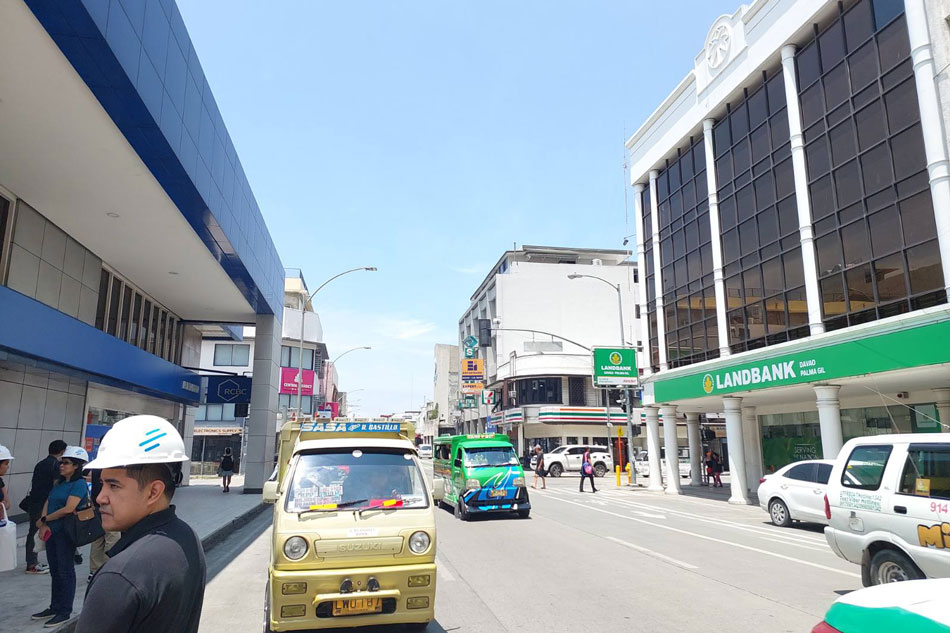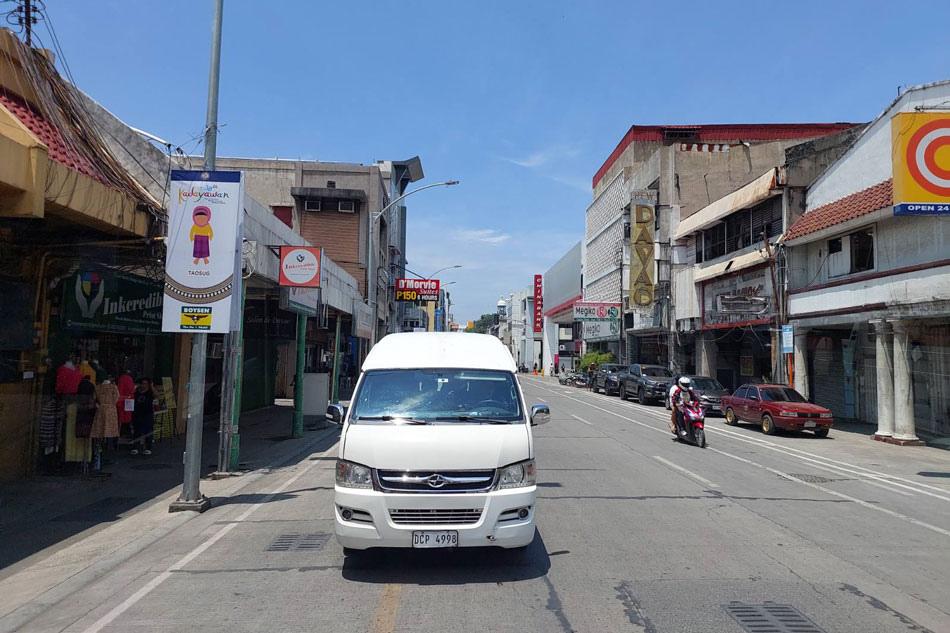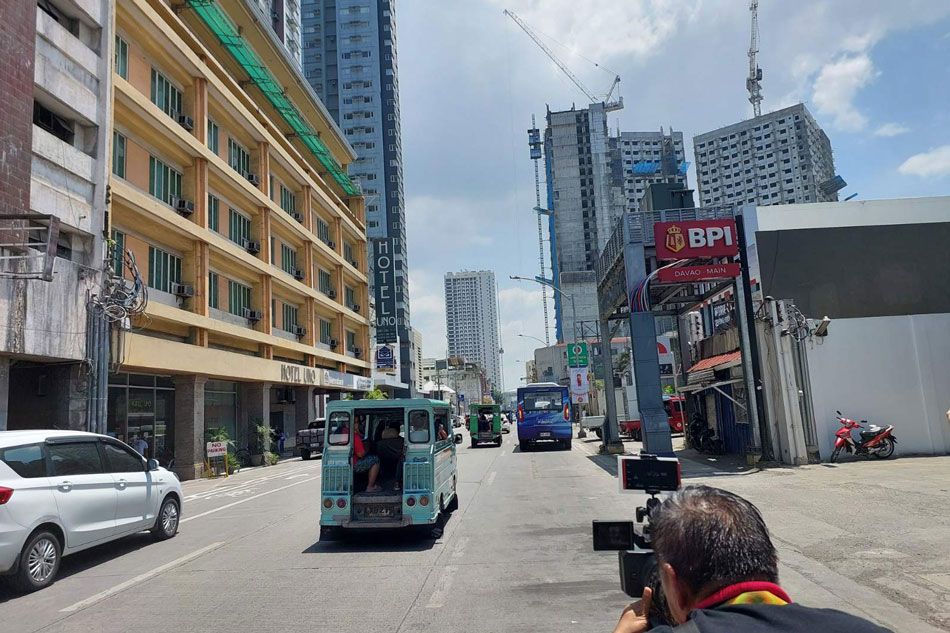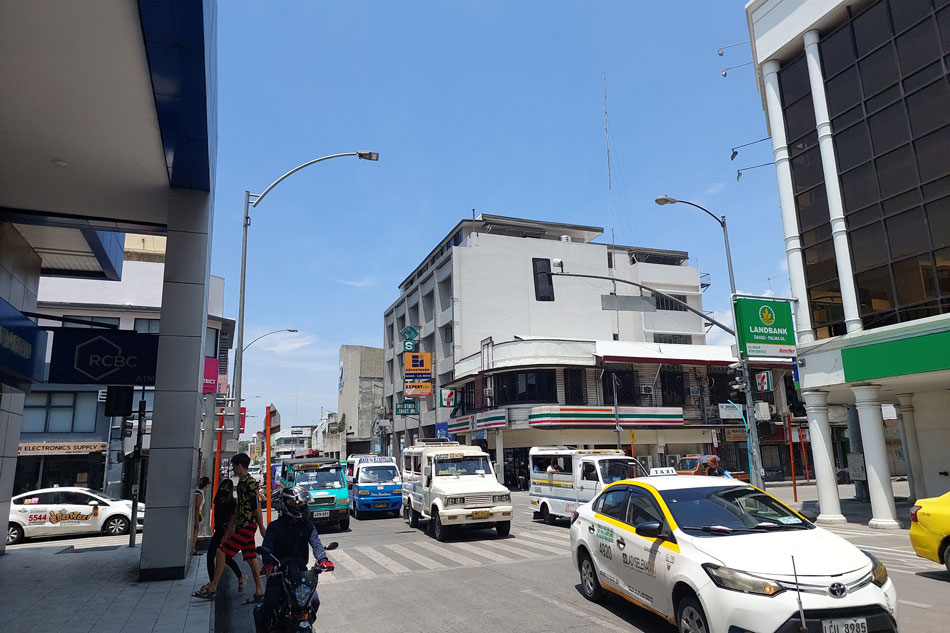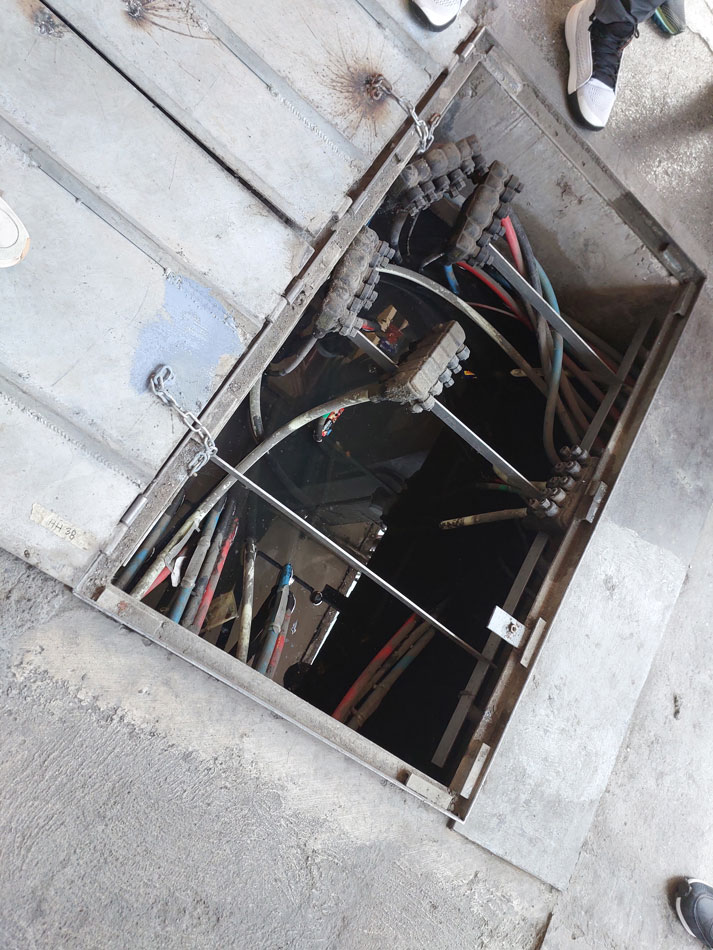No wires? Davao underground cabling 25 pct done: power firm | ABS-CBN
ADVERTISEMENT

Welcome, Kapamilya! We use cookies to improve your browsing experience. Continuing to use this site means you agree to our use of cookies. Tell me more!
No wires? Davao underground cabling 25 pct done: power firm
No wires? Davao underground cabling 25 pct done: power firm
Benise Balaoing,
ABS-CBN News
Published Aug 18, 2023 06:13 PM PHT
MANILA — Davao City's plan to have electric and other utility wires removed from overhead posts and installed underground along select streets is 25 percent complete, according to the company in charge of the project.
MANILA — Davao City's plan to have electric and other utility wires removed from overhead posts and installed underground along select streets is 25 percent complete, according to the company in charge of the project.
The city's local power distributor said the project is mandated by the Davao City local government in a 2017 ordinance.
The city's local power distributor said the project is mandated by the Davao City local government in a 2017 ordinance.
"We have completed 2 kilometers of around 7.5 kilometers," said Engineer Prince Rainier Yamyamin, the lead engineer of the underground cabling project for Davao Light and Power Company.
"We have completed 2 kilometers of around 7.5 kilometers," said Engineer Prince Rainier Yamyamin, the lead engineer of the underground cabling project for Davao Light and Power Company.
In 2017, the Davao City government ordered telecommunications companies and the Davao Light and Power Company to convert their overhead wires into an underground cable system.
In 2017, the Davao City government ordered telecommunications companies and the Davao Light and Power Company to convert their overhead wires into an underground cable system.
ADVERTISEMENT
The goal of the project, according to the city government, is to boost its image as a competitive city that attracts investments while ensuring sustainable development.
The goal of the project, according to the city government, is to boost its image as a competitive city that attracts investments while ensuring sustainable development.
The project also hopes to show Davaoeños a "clear model of a sustainable and aesthetic response to the rising demands of progress."
The project also hopes to show Davaoeños a "clear model of a sustainable and aesthetic response to the rising demands of progress."
Most of the roads chosen for the underground cabling project are the ones where parades usually pass by during the Kadayawan Festival--Davao' annual thanksgiving celebration attended by local and foreign tourists.
Most of the roads chosen for the underground cabling project are the ones where parades usually pass by during the Kadayawan Festival--Davao' annual thanksgiving celebration attended by local and foreign tourists.
As the city celebrated the 2023 Kadayawan Festival, Davao Light told journalists that they have completed the laying of underground cables along C.M. Recto Street and San Pedro Street.
As the city celebrated the 2023 Kadayawan Festival, Davao Light told journalists that they have completed the laying of underground cables along C.M. Recto Street and San Pedro Street.
The placing of underground cables along Recto St. started in March 2018, and was completed in 2021.
The placing of underground cables along Recto St. started in March 2018, and was completed in 2021.
The one along San Pedro Street, meanwhile, started in March 2021 and was finished in February 2023.
The one along San Pedro Street, meanwhile, started in March 2021 and was finished in February 2023.
Power Systems Line Design Engineer Leonardo Remulta III said they are now placing cables beneath the Ramon Magsaysay Avenue, which is about 1.4 kilometers long.
Power Systems Line Design Engineer Leonardo Remulta III said they are now placing cables beneath the Ramon Magsaysay Avenue, which is about 1.4 kilometers long.
Phase 1 of the Ramon Magsaysay cabling project, which starts from the post office and ends at Suazo Street, will be completed by the first quarter of 2024, he noted.
Phase 1 of the Ramon Magsaysay cabling project, which starts from the post office and ends at Suazo Street, will be completed by the first quarter of 2024, he noted.
Phase 2, which covers the part of the Avenue that traverses Davao's Chinatown, will be completed in early 2025.
Phase 2, which covers the part of the Avenue that traverses Davao's Chinatown, will be completed in early 2025.
Meanwhile, the laying of underground cables under Ponciano and Pelayo Streets will be started in 2024 and may be completed in 2027, while the underground cabling in Quirino Avenue might start in 2027 and be finished by 2029.
Meanwhile, the laying of underground cables under Ponciano and Pelayo Streets will be started in 2024 and may be completed in 2027, while the underground cabling in Quirino Avenue might start in 2027 and be finished by 2029.
Remulta said the project was delayed by the COVID-19 pandemic.
Remulta said the project was delayed by the COVID-19 pandemic.
"Merong mga lockdowns implemented around the city which causes our workforce to halt the operation, and of course the Ukraine-Russia war, 'to naman naka-affect sa delivery ng aming mga utility," he said.
"Merong mga lockdowns implemented around the city which causes our workforce to halt the operation, and of course the Ukraine-Russia war, 'to naman naka-affect sa delivery ng aming mga utility," he said.
(There were citywide lockdowns that forced our employees to stop operations, and the Ukraine-Russia war also affected the delivery of our utilities.)
(There were citywide lockdowns that forced our employees to stop operations, and the Ukraine-Russia war also affected the delivery of our utilities.)
Still, he said that the project is worth undertaking because it makes for a prettier and safer city.
Still, he said that the project is worth undertaking because it makes for a prettier and safer city.
"This improves the reliability of our lines," he said.
"This improves the reliability of our lines," he said.
"Most of our interruptions are caused by temporary faults, yung mga puno na masabit lang sa ating mga lights, or may mga ibon malapit sa ating mga devices that will cause tripping sa line."
"Most of our interruptions are caused by temporary faults, yung mga puno na masabit lang sa ating mga lights, or may mga ibon malapit sa ating mga devices that will cause tripping sa line."
"So those are eliminated because all of our assets are already buried underground," he explained.
"So those are eliminated because all of our assets are already buried underground," he explained.
"It considerably improves the image of the city, I mean, (it) encourages investors to invest within that area," he added.
"It considerably improves the image of the city, I mean, (it) encourages investors to invest within that area," he added.
Yamyamin also said the underground cabling project is also a safer option even in the case of light flooding and earthquakes.
Yamyamin also said the underground cabling project is also a safer option even in the case of light flooding and earthquakes.
"Our cables are designed to be submerged in low-level flood," he said.
"Our cables are designed to be submerged in low-level flood," he said.
"We have ethical standards by engineers and other science practitioners on how we design and how we purchase the right equipment and how use the right methodology for the right application," he said.
"We have ethical standards by engineers and other science practitioners on how we design and how we purchase the right equipment and how use the right methodology for the right application," he said.
Read More:
Davao
Davao Light and Power Company
electricity
infrastructure
sustainability
power line
Aboitiz Power
ADVERTISEMENT
ADVERTISEMENT



